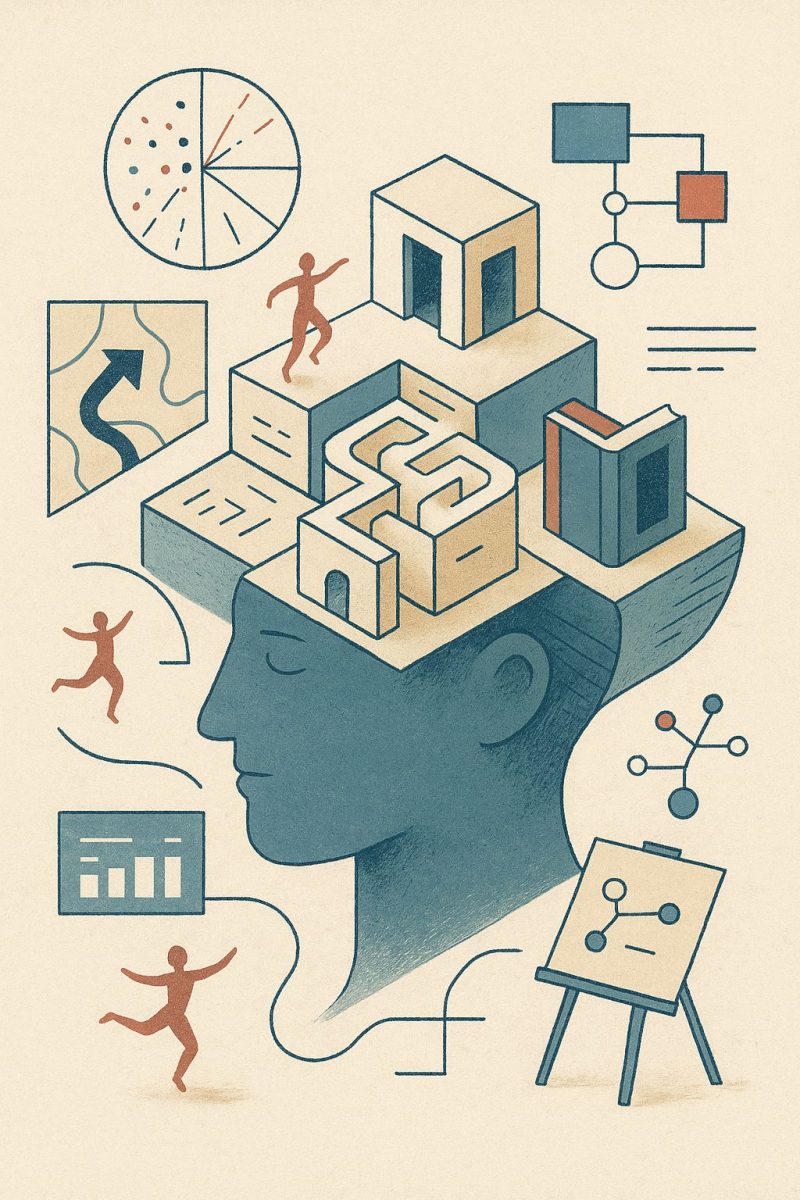From a distance, web design looks decorative: colors, visuals, interface grids.
But step closer and you’ll see it’s not about decoration. It is about choreography.
It is how humans move through systems, make decisions, and intuit paths.
Web designers build cognitive experiences. And that mindset does not belong to them alone.
I. Space, Flow, Light
Interior Architect, Exhibition Curator, Stage Designer
A well-designed interface doesn’t just look clean. It feels walkable.
Like a hallway you never bump into. Like a room that breathes.
Interior architects design movement through shape and silence.
Exhibition curators organize memory through spatial rhythm.
Stage designers point the eye before the actor ever appears.
Web designers do all three, on a screen, in milliseconds.
II. Structure Without Concrete
Software Architect, Fiction Writer, Game Level Designer
These are builders without bricks.
They craft systems where sequence is everything.
A software architect layers invisible logic.
A novelist choreographs the reader’s emotional route.
A level designer sets the pace between curiosity and challenge.
A web designer borrows from them all, then makes it clickable.
III. Influence Through Rhythm
Video Editor, Advertiser, Instructional Designer
Some professions manipulate flow the way others shape form.
They build impact into pacing.
The editor cuts on breath, not time.
The advertiser plants desire just before resistance can form.
The instructional designer scaffolds knowledge to keep effort below threshold.
Web design is no different. It is about when, not just what.
IV. Sensing the Invisible
Perfume Designer, UX Researcher, Choreographer
There are those who design for what can’t be seen.
They sculpt intuition, not objects.
A perfume designer evokes stories with no words.
A UX researcher decodes gestures into meaning.
A choreographer maps feelings onto physicality.
Web designers too create without showing. They just know when a click “feels right.”
V. Texture, Layer, Breath
Fashion Designer, Ceramic Artist, Book Layout Specialist
Tactility is not limited to things we touch.
It is in flow, friction, softness, balance.
A fashion designer cuts fabric to match motion.
A ceramicist leaves fingerprints in every form.
A layout artist guides not just where the eyes go, but where they rest.
Great websites have that same silent tactility.
VI. Cities of Thought
Transportation Planner, Systems Analyst, Information Architect
This is not content arrangement.
It is traffic design, logic structuring, mental architecture.
A transportation planner sculpts flow with friction in mind.
A systems analyst highlights thresholds, loops, and triggers.
An information architect makes the maze feel like a map.
So does a web designer, when they are doing it right.
VII. Decision Through Tempo
DJ, Sports Tactics Analyst, Financial Trader
Timing is its own language.
And these people speak it fluently.
The DJ senses energy before the crowd does.
The analyst sees the space before the ball is kicked.
The trader responds before the signal is even formalized.
Web designers too build reactions before users know they are reacting.
VIII. Visual Logic
Map Designer, Infographics Artist, Weather Broadcaster
Visual design is not about beauty.
It is about understanding at a glance.
Map designers compress geographies into meaning.
Infographics artists bend data into shapes the brain likes.
Weather broadcasters animate invisible forces with persuasive simplicity.
Web designers operate in that same tension. They show enough, and hide the rest.
IX. Story in Space
Museum Specialist, Escape Room Designer, Theme Park Engineer
Some stories unfold in pages.
Others unfold in space.
A museum specialist builds memory through motion.
An escape room designer writes narrative with locked doors.
A theme park engineer alternates adrenaline and calm to keep the story alive.
Web designers don’t just tell stories.
They situate them across screens, scrolls, silences.
Conclusion: Design That Disappears
The web designer is not a decorator.
Not a layout technician.
Not a pixel pusher.
They are part architect, part choreographer, part semiotician.
They build systems that are only successful if they are invisible.
Because the best design never says “look at me.”
It says, “you already know.”
If you’re looking for web designers in Macon who think like system architects, not just stylists, let’s build something meaningful together →


